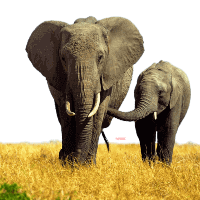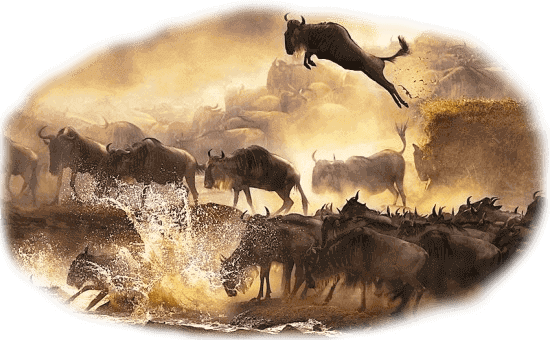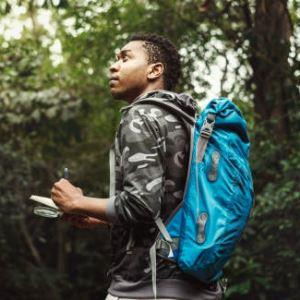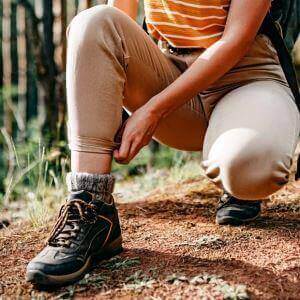 Traveling from Spain to Kenya for a safari adventure is a thrilling prospect that promises unforgettable memories. Kenya, known for its dramatic landscapes and iconic wildlife, is a top destination for those seeking authentic African experiences. Whether you're dreaming of seeing the Big Five in the Maasai Mara or relaxing on the serene beaches of the Indian Ocean, this guide helps you plan with confidence and clarity. The first step in planning a safari trip to Kenya from Europe is choosing the right time to visit. Kenya enjoys a diverse climate, and the best wildlife viewing opportunities occur during the dry seasons. From July to October, visitors can witness the Great Migration in full swing, as millions of wildebeest and zebras cross the Mara River. Alternatively, January and February offer clearer skies and excellent visibility, ideal for photography and less crowded game parks. Understanding travel requirements is essential. Spanish travelers need an eVisa, which can be obtained easily through Kenya's official online portal. Your passport must be valid for at least six months from your entry date. In terms of health precautions, a yellow fever vaccination is mandatory and should be administered at least ten days before travel. Additional recommended vaccines include hepatitis A, typhoid, and tetanus. Choosing the right safari destinations is also key to a successful trip. The Maasai Mara National Reserve is arguably Kenya's crown jewel, known for its lion prides and dramatic savannahs. Amboseli National Park offers breathtaking views of Mount Kilimanjaro and large elephant herds, while Tsavo East is perfect for those seeking a more rugged, off-the-beaten-path experience. Each park offers its own unique charm and wildlife population. While Kenya's wildlife is a major draw, its rich cultural tapestry shouldn't be overlooked. Consider spending time with the Maasai community to learn about traditional customs, or explore Nairobi's museums, food markets, and art galleries. These cultural experiences add depth to your safari adventure, making your trip truly immersive. A well-planned Kenya safari from Spain requires attention to detail but offers immense rewards. From securing travel documents to selecting the perfect game reserve, every step of your journey contributes to a transformative experience. Make sure to research accommodations, ranging from luxury lodges to budget-friendly campsites, to suit your travel style. Booking with a reputable safari operator ensures safety, reliability, and local expertise that enhances your experience. Consider the internal logistics like domestic flights or ground transportation between parks, as travel distances can be long. Preparing a detailed itinerary that balances adventure with relaxation will help you make the most of your time in Kenya. With the right preparation, your adventure in Kenya will be nothing short of extraordinary, filled with majestic wildlife encounters, cultural exchanges, and stunning landscapes that leave a lasting impression.
Traveling from Spain to Kenya for a safari adventure is a thrilling prospect that promises unforgettable memories. Kenya, known for its dramatic landscapes and iconic wildlife, is a top destination for those seeking authentic African experiences. Whether you're dreaming of seeing the Big Five in the Maasai Mara or relaxing on the serene beaches of the Indian Ocean, this guide helps you plan with confidence and clarity. The first step in planning a safari trip to Kenya from Europe is choosing the right time to visit. Kenya enjoys a diverse climate, and the best wildlife viewing opportunities occur during the dry seasons. From July to October, visitors can witness the Great Migration in full swing, as millions of wildebeest and zebras cross the Mara River. Alternatively, January and February offer clearer skies and excellent visibility, ideal for photography and less crowded game parks. Understanding travel requirements is essential. Spanish travelers need an eVisa, which can be obtained easily through Kenya's official online portal. Your passport must be valid for at least six months from your entry date. In terms of health precautions, a yellow fever vaccination is mandatory and should be administered at least ten days before travel. Additional recommended vaccines include hepatitis A, typhoid, and tetanus. Choosing the right safari destinations is also key to a successful trip. The Maasai Mara National Reserve is arguably Kenya's crown jewel, known for its lion prides and dramatic savannahs. Amboseli National Park offers breathtaking views of Mount Kilimanjaro and large elephant herds, while Tsavo East is perfect for those seeking a more rugged, off-the-beaten-path experience. Each park offers its own unique charm and wildlife population. While Kenya's wildlife is a major draw, its rich cultural tapestry shouldn't be overlooked. Consider spending time with the Maasai community to learn about traditional customs, or explore Nairobi's museums, food markets, and art galleries. These cultural experiences add depth to your safari adventure, making your trip truly immersive. A well-planned Kenya safari from Spain requires attention to detail but offers immense rewards. From securing travel documents to selecting the perfect game reserve, every step of your journey contributes to a transformative experience. Make sure to research accommodations, ranging from luxury lodges to budget-friendly campsites, to suit your travel style. Booking with a reputable safari operator ensures safety, reliability, and local expertise that enhances your experience. Consider the internal logistics like domestic flights or ground transportation between parks, as travel distances can be long. Preparing a detailed itinerary that balances adventure with relaxation will help you make the most of your time in Kenya. With the right preparation, your adventure in Kenya will be nothing short of extraordinary, filled with majestic wildlife encounters, cultural exchanges, and stunning landscapes that leave a lasting impression.
Safari Planning at a Glance: Kenya Travel Essentials
| Category | Details |
|---|---|
| Best Travel Months | July to October, January to February |
| Required Travel Documents | eVisa, valid passport, yellow fever certificate |
| Top Safari Parks | Maasai Mara, Amboseli, Tsavo East |
| Key Cultural Experiences | Maasai village visits, Swahili food, Nairobi excursions |
| Recommended Vaccines | Yellow fever, Hepatitis A, Typhoid, Tetanus |
Best Time to Visit Kenya for Wildlife and Weather Conditions
Deciding when to visit Kenya is crucial for ensuring an enriching safari experience. The country enjoys a tropical climate, but due to its varying altitudes and diverse landscapes, weather conditions can differ significantly depending on the region. The dry seasons from July to October and again in January and February are generally regarded as the most favorable periods to explore Kenya. These months offer optimal conditions for wildlife viewing, as animals gather around water sources and vegetation is sparse, making them easier to spot. One of the key highlights during the dry season is the world-famous Great Migration. From July to October, over two million wildebeest, zebras, and gazelles cross the plains of the Maasai Mara, often drawing the attention of predators like lions and crocodiles. This spectacle offers unparalleled opportunities for photography and game drives. If your goal is to witness this natural wonder, these are the months to target. January and February provide another window of good weather, with sunny days and fewer tourists. This period is particularly appealing to photographers, bird watchers, and those who prefer a quieter safari. The landscape is greener compared to later in the year, and young animals born during the short rains in November and December add an extra element of excitement to the wildlife encounters. The long rainy season from April through May can make travel challenging. Heavy rains may lead to difficult road conditions and limited animal sightings as wildlife disperses due to abundant water. However, this period is considered low season and may appeal to budget travelers who are willing to trade some convenience for lower rates and fewer crowds. If you're balancing climate, crowd levels, and costs, the shoulder months of June and November are also worth considering. These transitional periods can offer a mix of good weather, decent wildlife sightings, and moderate prices. While the wildlife density may not be at its peak, the experience is still highly rewarding and less crowded. The best time to travel from Spain to Kenya depends on your personal preferences whether you prioritize witnessing iconic migrations, enjoying ideal weather, or stretching your budget. If your main goal is to observe the awe-inspiring Great Migration, then planning your trip between July and October is highly recommended. This is when vast herds of wildebeest and zebras traverse the Maasai Mara, attracting predators and creating some of the most dramatic wildlife scenes in Africa. For travelers who favor fewer crowds and a more relaxed experience, January and February offer excellent weather conditions, making them ideal months for photography and peaceful game drives. Budget-conscious travelers might find the low season from April to May appealing due to reduced accommodation and tour prices, though heavy rains can make some parks less accessible. June and November offer a middle ground with mild weather, good wildlife sightings, and moderate pricing. Taking these variables into account allows travelers to tailor their Kenyan adventure to their unique interests and needs, ensuring a fulfilling and memorable safari experience.
Optimal Months for Kenya Safari Based on Climate and Migration
Planning your first safari trip from Spain to Kenya can feel overwhelming, especially when timing your visit to get the most out of this incredible destination. This Spain to Kenya travel guide for first-timers outlines the key months to travel and what each season offers, ensuring you're fully prepared.
Dry Season (July to October)
- Great Migration: This is peak safari season, when millions of wildebeest, zebras, and gazelles make their annual migration through the Maasai Mara. Predators like lions and crocodiles follow the herds, creating intense wildlife drama. It’s the best time to witness large-scale animal movement and interaction.
- Clear Weather: Expect blue skies, low humidity, and minimal rainfall. Vegetation is sparse, which makes it easier to spot animals. Morning and evening game drives are especially rewarding, with cooler temperatures and golden light.
Short Dry Season (January to February)
- Fewer Tourists: These months fall between Kenya's busy holiday periods, offering a quieter experience in the national parks. This is ideal for travelers who value solitude and a slower pace.
- Young Wildlife: This season coincides with the birthing period for many animals. Safaris during this time often include sightings of newborns and exciting predator-prey dynamics.
Rainy Season (April to May)
- Budget-Friendly: Accommodation rates and safari packages are at their lowest, making this a great choice for budget-conscious travelers. You may also find more flexibility with bookings.
- Lush Landscapes: The rains transform the savannahs into lush green expanses filled with flowers and birdlife. While some roads become muddy and harder to navigate, the scenery is stunning and ideal for nature photography.
Shoulder Months (June and November)
- Balanced Experience: These transitional months offer a compromise between weather, pricing, and wildlife visibility. While not as dry as peak season, they still provide solid safari experiences without the high costs or large crowds.
With this seasonal breakdown, first-time travelers from Spain can confidently choose the perfect time to embark on a Kenyan safari adventure.
Travel Requirements From Spain to Kenya: Visas and Vaccines
 Planning a trip from Spain to Kenya is an exciting step toward immersing yourself in one of Africa’s most iconic safari destinations. Before you embark on this adventure, it’s crucial to ensure all travel requirements are met to make your journey smooth and stress-free. For Spanish travelers, the process begins with securing a visa. Kenya requires all Spanish passport holders to apply for an eVisa, which can be conveniently obtained online. Ensure your passport is valid for at least six months from your planned entry date. Once your visa is secured, health and vaccination requirements come next. The most important health regulation is the mandatory yellow fever vaccination. Travelers must receive the shot at least ten days before departure, and you should carry the international certificate as proof. Upon arrival in Kenya, immigration officers may ask to see this document. Other vaccines, while not mandatory, are strongly recommended to protect your health during your stay. These include hepatitis A, which guards against contaminated food and water; typhoid, which is spread through unsafe food and drink; and tetanus, useful for travelers engaging in outdoor activities. Spanish travelers should also consider malaria prevention. Although not required, taking antimalarial medication is strongly advised, especially if you plan to visit regions outside Nairobi and highland areas, where the risk is higher. You should consult your doctor or a travel clinic well in advance to discuss the best preventive treatment for your itinerary. Travel insurance is another essential element that first-time safari-goers should not overlook. Choose a comprehensive plan that covers medical expenses, trip cancellations, and emergency evacuations. While Kenya has reputable medical facilities in major cities like Nairobi and Mombasa, rural areas and national parks may not offer the same level of care. Carry digital and physical copies of all important documents, including your passport, visa, vaccination certificate, travel insurance, and flight details. Keeping these items organized and accessible will ease your journey through immigration and reduce stress if you encounter any disruptions. Proper preparation goes a long way in ensuring a memorable and safe journey. Meeting the health and legal requirements ahead of time will allow you to focus on what truly matters enjoying the rich culture, stunning landscapes, and unforgettable Kenya safari experiences for Spanish travelers. Having your visa, vaccinations, and travel insurance sorted before departure means you can fully immerse yourself in the magic that Kenya offers without worry. Once in Kenya, you’ll find the experience both exhilarating and deeply rewarding. From your first game drive across the sun-soaked plains of the Maasai Mara to cultural exchanges with local communities, your trip becomes more than just a holiday it transforms into a personal journey. A well-planned itinerary ensures that each day brings new adventures while still giving you time to relax and reflect. Whether you're watching elephants at Amboseli, enjoying fresh Swahili cuisine on the coast, or learning about traditional Maasai customs, every detail of your preparation enhances your ability to be present in the moment. This kind of immersive travel experience not only fosters a deeper appreciation for Kenya’s natural and cultural wealth but also leaves you with stories and memories that will last a lifetime.
Planning a trip from Spain to Kenya is an exciting step toward immersing yourself in one of Africa’s most iconic safari destinations. Before you embark on this adventure, it’s crucial to ensure all travel requirements are met to make your journey smooth and stress-free. For Spanish travelers, the process begins with securing a visa. Kenya requires all Spanish passport holders to apply for an eVisa, which can be conveniently obtained online. Ensure your passport is valid for at least six months from your planned entry date. Once your visa is secured, health and vaccination requirements come next. The most important health regulation is the mandatory yellow fever vaccination. Travelers must receive the shot at least ten days before departure, and you should carry the international certificate as proof. Upon arrival in Kenya, immigration officers may ask to see this document. Other vaccines, while not mandatory, are strongly recommended to protect your health during your stay. These include hepatitis A, which guards against contaminated food and water; typhoid, which is spread through unsafe food and drink; and tetanus, useful for travelers engaging in outdoor activities. Spanish travelers should also consider malaria prevention. Although not required, taking antimalarial medication is strongly advised, especially if you plan to visit regions outside Nairobi and highland areas, where the risk is higher. You should consult your doctor or a travel clinic well in advance to discuss the best preventive treatment for your itinerary. Travel insurance is another essential element that first-time safari-goers should not overlook. Choose a comprehensive plan that covers medical expenses, trip cancellations, and emergency evacuations. While Kenya has reputable medical facilities in major cities like Nairobi and Mombasa, rural areas and national parks may not offer the same level of care. Carry digital and physical copies of all important documents, including your passport, visa, vaccination certificate, travel insurance, and flight details. Keeping these items organized and accessible will ease your journey through immigration and reduce stress if you encounter any disruptions. Proper preparation goes a long way in ensuring a memorable and safe journey. Meeting the health and legal requirements ahead of time will allow you to focus on what truly matters enjoying the rich culture, stunning landscapes, and unforgettable Kenya safari experiences for Spanish travelers. Having your visa, vaccinations, and travel insurance sorted before departure means you can fully immerse yourself in the magic that Kenya offers without worry. Once in Kenya, you’ll find the experience both exhilarating and deeply rewarding. From your first game drive across the sun-soaked plains of the Maasai Mara to cultural exchanges with local communities, your trip becomes more than just a holiday it transforms into a personal journey. A well-planned itinerary ensures that each day brings new adventures while still giving you time to relax and reflect. Whether you're watching elephants at Amboseli, enjoying fresh Swahili cuisine on the coast, or learning about traditional Maasai customs, every detail of your preparation enhances your ability to be present in the moment. This kind of immersive travel experience not only fosters a deeper appreciation for Kenya’s natural and cultural wealth but also leaves you with stories and memories that will last a lifetime.
Kenya Visa Application Process for Spanish Citizens Explained
For Spanish travelers preparing for a safari adventure in Kenya, securing a visa is a critical step. Fortunately, the process has been streamlined with the introduction of Kenya's eVisa system, which allows applicants to complete the entire process online. Spanish citizens must visit the official eVisa portal, where they can register, fill out the application form, and upload necessary documents. These typically include a passport-sized photo, a scanned copy of the passport's bio page, and proof of accommodation or travel itinerary. The eVisa costs approximately $50 USD and is typically processed within 2 to 5 business days. However, it's wise to apply at least two weeks before your departure to account for any unexpected delays. Once approved, the eVisa will be sent via email and should be printed and presented upon arrival in Kenya. Travelers are advised to ensure their passports are valid for at least six months beyond their arrival date and contain at least one blank page for stamping. There are different visa categories depending on the purpose of your visit, but most tourists will apply for the Single Entry Visa, which allows a stay of up to 90 days. It's important to note that while the eVisa covers entry into Kenya, travelers planning to visit neighboring countries such as Uganda or Rwanda may consider applying for an East Africa Tourist Visa, which permits travel among these countries with one visa. To minimize complications, always double-check the information you submit and keep a digital copy of your application and payment confirmation. While entry approval is generally smooth for Spanish nationals, having these documents easily accessible can help resolve any issues at immigration. It’s also recommended to print out supporting travel documents such as hotel bookings, a return flight ticket, and proof of sufficient funds for your stay. Though rarely requested, having them on hand may expedite your entry process if questions arise. Applying for a Kenyan eVisa is straightforward, but preparation and attention to detail are key. With your visa in hand, you'll be one step closer to experiencing Kenya’s extraordinary wildlife, landscapes, and cultures. This small but important task ensures you’re ready to make the most of your adventure in East Africa. Taking the time to thoroughly review your documentation, including your passport validity, printed eVisa, and health certificates, will save you time and stress at the border. It's not just about ticking boxes it's about setting yourself up for a journey free of logistical hiccups. Having all required paperwork readily available will make your entry process smoother and allow you to shift your focus to the excitement of your itinerary. Once you're in Kenya, all the administrative effort fades into the background as you begin your exploration of game parks, cultural experiences, and breathtaking scenery. The extra effort up front ensures peace of mind throughout your trip.
Top Safari Parks and Cultural Experiences in Kenya
Kenya is a safari paradise, offering a range of landscapes and ecosystems that attract travelers from around the globe. For Europeans, and especially Spanish adventurers seeking the thrill of wildlife encounters and meaningful cultural immersion, Kenya stands as a premier destination. With so many options, choosing where to go can be daunting. Maasai Mara National Reserve is often the centerpiece of any Kenyan safari itinerary. Famous for the Great Migration and its year-round predator sightings, the Mara delivers raw and dramatic wildlife moments. Open plains dotted with acacia trees set the stage for awe-inspiring encounters with lions, cheetahs, elephants, and more. Amboseli National Park offers a different experience with its sweeping views of Mount Kilimanjaro, Africa’s tallest peak. Large herds of elephants roam freely here, and the landscape, punctuated by swamps and dusty plains, provides a picturesque setting that contrasts beautifully with the Mara. Tsavo East and Tsavo West are Kenya’s largest combined parks and ideal for those looking to escape the more frequented tourist paths. The parks are known for their red-dusted elephants, volcanic hills, and rugged beauty. Here, visitors can enjoy a more solitary and immersive bush experience. Beyond wildlife, Kenya offers vibrant cultural interactions. A visit to a traditional Maasai village provides a window into the customs and daily life of one of Africa’s most iconic ethnic groups. In coastal cities like Mombasa or Lamu, travelers can savor Swahili cuisine rich with spices and history, influenced by centuries of trade with Arabs, Persians, and Portuguese. Nairobi, the capital, is worth a stop for its blend of modernity and tradition. From the National Museum and Karen Blixen Museum to lively street markets and urban wildlife parks like Nairobi National Park, there is much to explore before or after a safari. For European tourists seeking rich nature and culture, Kenya offers layered experiences that go well beyond animal sightings. Whether you’re chasing the Great Migration, photographing elephants against a mountain backdrop, or chatting with locals over chapati and chai, these journeys leave a lasting impression. These top safari destinations in Kenya for European tourists represent more than travel they are immersive journeys into landscapes that stir the soul and communities that share stories older than time. Each destination brings its own sense of wonder, whether it's the iconic rolling plains of the Maasai Mara, the snow-capped backdrop of Mount Kilimanjaro in Amboseli, or the crimson-hued elephants of Tsavo. What makes these places so extraordinary is not just the wildlife, but the way the natural world interacts with human history, tradition, and lifestyle. Traveling through Kenya as a European visitor means crossing more than just borders it means entering an environment rich with contrasts: arid savannahs and lush forests, ancient tribal customs and modern conservation efforts. These experiences stay with travelers long after they leave, transforming how they see both the world and themselves. With every game drive, community visit, and cultural meal shared, visitors step deeper into a vibrant narrative of nature and heritage that few other countries can match. For those seeking authenticity, depth, and wonder, Kenya is more than a destination it is an experience that defines what it means to truly explore.
Best Kenya Safari Destinations and Local Experiences to Explore
Kenya offers a wealth of safari destinations and cultural experiences that cater to every type of traveler. For Spanish tourists, especially those looking for both adventure and comfort, the country delivers world-class wildlife encounters and rich cultural immersion. From the iconic Maasai Mara to hidden gems like Samburu, the variety of landscapes and activities is astounding. The Maasai Mara National Reserve is a must-visit. It's famed for the Great Migration and dense predator populations, offering game drives where lions, cheetahs, and wildebeests steal the show. For a more serene experience, Amboseli National Park features vast plains with majestic views of Mount Kilimanjaro and large herds of elephants. Tsavo East and West provide a rugged and less-touristed alternative. Here, red elephants, volcanic hills, and expansive wilderness create a more remote safari feel. Samburu National Reserve is another jewel, home to unique species like the Grevy's zebra and reticulated giraffe, and is less crowded than other parks. Beyond the wildlife, Kenya's cultural depth is just as enriching. Visit a Maasai village to witness traditional life firsthand, or explore Lamu Island for Swahili architecture and centuries-old customs. Nairobi, too, offers insights into Kenyan history and daily life through museums, markets, and urban parks. And for those seeking high-end comfort, there are luxury safari lodges in Kenya for Spanish tourists that combine lavish amenities with authentic bush settings. Whether it’s a private villa overlooking the savannah or a tented camp with five-star service, these accommodations enhance the overall safari experience with elegance and exclusivity. Kenya blends spectacular nature with meaningful cultural interaction, making it one of the most rewarding destinations for Spanish travelers looking to explore Africa in depth. The country's diverse offerings from the iconic Big Five roaming free across vast savannahs to ancient cultural traditions preserved in remote villages create a travel experience unlike any other. Spanish tourists can find themselves standing beneath Mount Kilimanjaro in Amboseli in the morning and sipping spiced tea in a coastal Swahili town by evening. Each destination offers a unique blend of adventure and cultural insight. Whether you’re drawn by the thrill of wildlife encounters, the serenity of unspoiled landscapes, or the warmth of Kenyan hospitality, this East African gem caters to all. The combination of world-class game reserves, luxurious lodges, and immersive cultural experiences means that a journey through Kenya leaves a lasting impression. As tourism infrastructure continues to improve and more direct travel options become available from Europe, Kenya is becoming increasingly accessible to Spanish travelers eager for authentic, transformative experiences.






